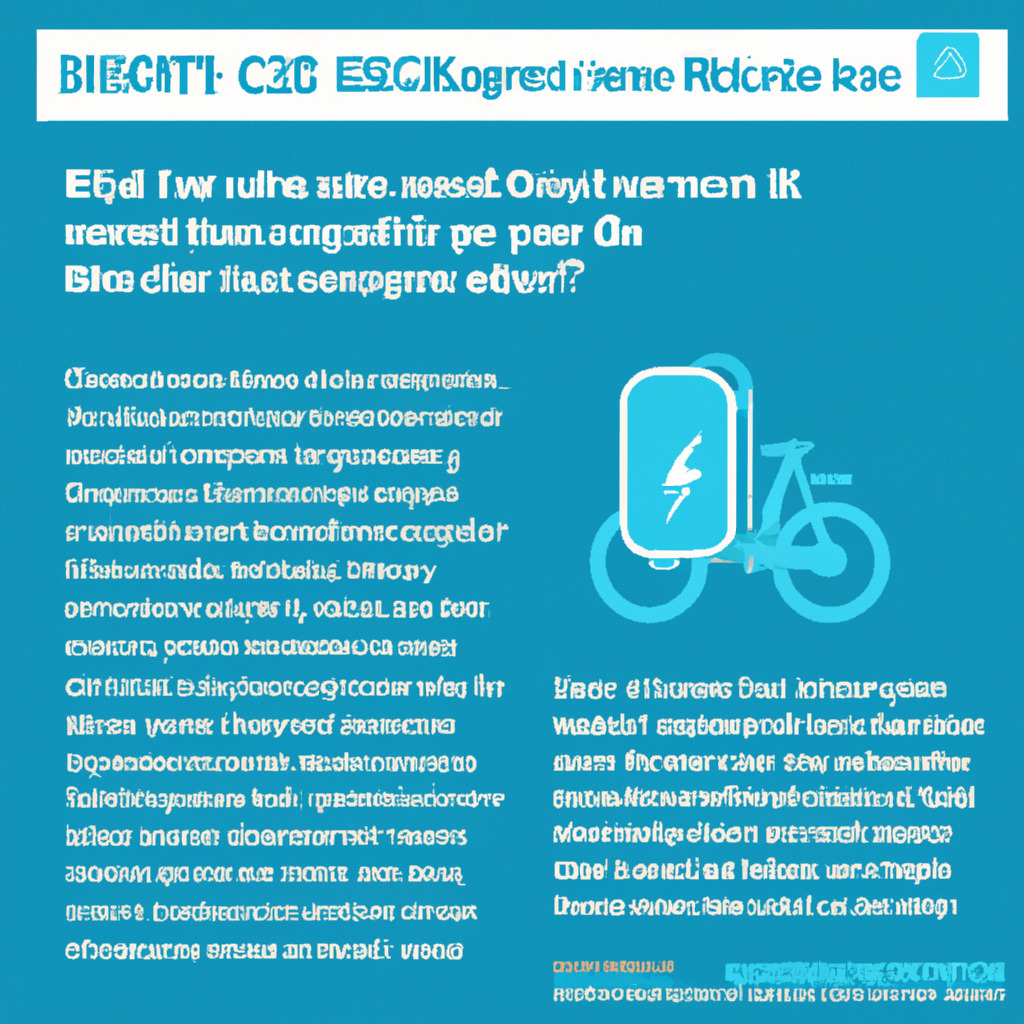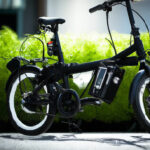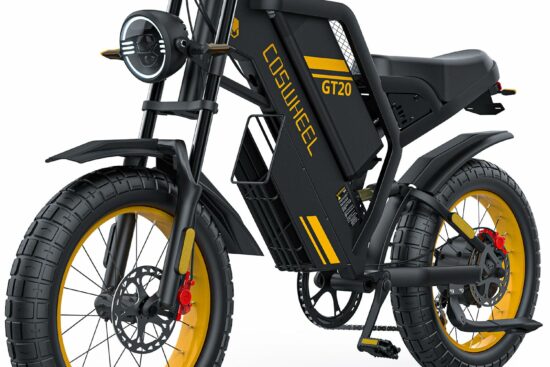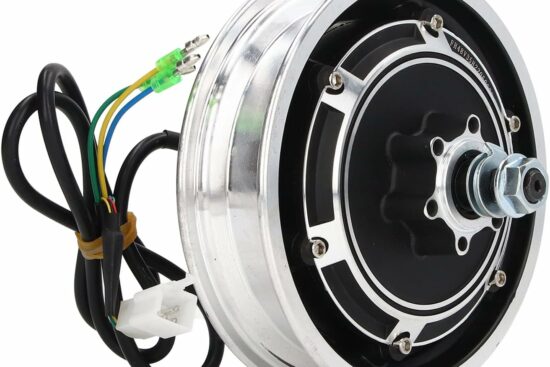
In today’s fast-paced world, owning an electric bike not only offers convenience and eco-friendly transportation, but also poses a potential security risk. As an electric bike owner, you must prioritize securing your valuable investment to protect against theft and unauthorized use. This article provides practical and effective strategies to enhance the security of your electric bike, ensuring a peace of mind while enjoying the benefits of this innovative mode of transportation.

Choosing the Right Lock
When it comes to securing your electric bike, choosing the right lock is crucial. There are several types of locks available in the market, each offering different levels of security. The most common types of locks include cable locks, U-locks, chain locks, and folding locks.
Cable locks are lightweight and flexible, making them convenient to carry around. However, they offer lower security compared to other types of locks and are more susceptible to cutting. U-locks, on the other hand, provide a high level of security due to their sturdy construction. They are resistant to cutting and picking, making them a popular choice among electric bike owners.
Chain locks are another popular option, known for their versatility and strength. They consist of a chain enclosed in a protective sleeve and are difficult to cut. Folding locks offer a balance between security and portability. They are compact and can be easily folded and stored. However, they may not provide the same level of security as U-locks or chain locks.
When choosing a lock for your electric bike, consider factors such as the level of security you require, the weight and portability of the lock, and the compatibility with your bike’s frame. It is recommended to opt for a lock that is certified by independent testing agencies, as this ensures its quality and reliability.
Key Features
Apart from the type of lock, there are several key features to consider when selecting a lock for your electric bike. These features can enhance the security and usability of the lock, providing added peace of mind.
One important feature to look for is a high-security locking mechanism. This could include features such as a disc-detainer mechanism, which makes the lock resistant to picking. Additionally, consider the size of the lock and the length of the shackle. A longer shackle allows for more flexibility in securing your bike to different objects.
Some locks also come with additional features such as anti-drilling plates or reinforced steel sleeves to protect against drilling attacks. Look for locks that have a protective outer coating, such as vinyl or silicone, to prevent scratches on your bike’s frame.
Another useful feature to consider is a key replacement program. Losing keys can be a hassle, but with a key replacement program, you can easily obtain a new set of keys without compromising the security of your lock. Additionally, some locks come with a mounting bracket or carrying case, making it easier to transport and store the lock when not in use.
Locking Techniques
Simply having a high-quality lock is not enough to ensure the security of your electric bike. It is equally important to use proper locking techniques to maximize the effectiveness of the lock.
Firstly, always lock your bike to a fixed and immovable object. This could be a bike rack, a sturdy pole, or a secure anchor point. Avoid locking your bike to items that can be easily cut or removed, such as flimsy fences or temporary signs.
Make sure to always secure your bike through the frame and the wheels. This will prevent thieves from easily removing the wheels and taking the rest of the bike. Additionally, securing the frame and the wheels to the anchor point will further deter thieves from attempting to steal your electric bike.
When locking your bike, ensure that there is minimal slack in the lock. This will prevent thieves from leveraging the lock and breaking it. It is also a good practice to position the lock in a way that makes it difficult to access or manipulate, such as facing the keyhole downwards or keeping it close to the ground.
Remember to lock your electric bike every time you leave it unattended, even if it is just for a few minutes. Thieves are often opportunistic and can strike quickly. By practicing proper locking techniques, you can significantly reduce the risk of your electric bike being stolen.
Identifying Safe Parking Locations
Choosing the right parking location is essential for ensuring the security of your electric bike. By selecting safe and secure parking spots, you can minimize the risk of theft and vandalism. When considering where to park your electric bike, there are several factors to keep in mind.
Public vs. Private
Public parking locations, such as bike racks on the street or at public transportation stations, are often well-trafficked and monitored. These areas can deter thieves as they prefer to operate in less crowded spaces. Moreover, public parking locations are usually well-lit, making them less attractive to criminals.
Private parking areas, such as garages or designated bike parking facilities, can provide an additional layer of security. These areas are typically monitored by security personnel or surveillance cameras. Private parking locations also offer the advantage of limited access, reducing the chances of unauthorized individuals tampering with or stealing your electric bike.
When choosing between public and private parking, consider the level of security you require and the convenience of the location. Public parking areas are more accessible and may be suitable for short-term parking, whereas private parking areas offer greater security for longer periods of time.
Well-Lit Areas
Parking your electric bike in a well-lit area can greatly enhance its security. Well-lit areas not only make it easier for you to locate your bike, but they also act as a deterrent to potential thieves. Criminals prefer to operate in dark or poorly-lit areas where they are less likely to be seen or identified.
When searching for a parking location, look for areas that are well-lit and have ample lighting, especially during nighttime or in dimly lit environments. Opt for well-lit parking lots, well-lit streets, or areas with overhead lighting. Additionally, choose locations that have lighting fixtures pointed towards the bike parking area, illuminating it effectively.
Surveillance
Parking your electric bike in areas equipped with surveillance cameras can significantly enhance its security. Surveillance cameras act as a deterrent to thieves, as they increase the chances of being caught on tape and subsequently identified and apprehended.
When selecting a parking location, look for areas that have visible surveillance cameras or signs indicating the presence of surveillance. These areas may include parking lots with camera systems, public transportation stations with CCTV, or private facilities with security personnel monitoring the premises. The presence of surveillance cameras can give you peace of mind knowing that your electric bike is being monitored and that any criminal activity will be recorded.
Bike Parking Infrastructure
Another aspect to consider when identifying safe parking locations is the presence of bike parking infrastructure. Some cities or towns may have designated bike parking areas equipped with bike racks, shelters, or lockers. These dedicated parking facilities provide a higher level of security compared to parking your electric bike on the street or in open areas.
Look for bike racks or parking facilities that are built specifically for electric bikes. These racks often have additional security features, such as built-in charging stations or lockable compartments. Additionally, choose areas that are well-maintained and regularly inspected to ensure the security and functionality of the bike parking infrastructure.
By selecting safe parking locations that are public or private, well-lit, equipped with surveillance, and have dedicated bike parking infrastructure, you can significantly reduce the risk of theft or damage to your electric bike. Taking the time to identify secure parking spots will provide you with peace of mind and ensure that your electric bike remains safe and protected.

Installing a GPS Tracker
Installing a GPS tracker on your electric bike is an effective way to enhance its security and increase the chances of recovery in the event of theft. GPS trackers use satellite technology to pinpoint the location of your bike, allowing you to track its movements in real-time.
Benefits of GPS Trackers
There are several benefits to installing a GPS tracker on your electric bike. Firstly, GPS trackers provide an added layer of security. In the unfortunate event that your bike is stolen, you can easily track its location and provide the authorities with accurate information for recovery.
GPS trackers also act as a deterrent to thieves. The presence of a visible GPS tracker can discourage potential thieves from targeting your electric bike, as they know that it can be easily traced and recovered.
Additionally, GPS trackers offer peace of mind. You can monitor the location of your electric bike at any time, ensuring that it is safe and where it should be. This is particularly useful when parking your bike in unfamiliar areas or when leaving it unattended for longer periods of time.
Types of GPS Trackers
There are various types of GPS trackers available in the market, each offering different features and functionalities. Some GPS trackers are designed specifically for bikes and offer compact and discreet designs that can be easily installed and hidden on your electric bike.
One type of GPS tracker is a standalone device that is attached to your electric bike. These trackers typically require a power source, such as a battery or a connection to the bike’s electrical system. They rely on cellular or satellite networks to transmit location data, which can be accessed through a smartphone app or a web-based platform.
Another type of GPS tracker is integrated into the bike itself. Some electric bikes come with built-in GPS tracking capabilities, allowing you to track the bike without the need for an external device. These integrated trackers are often more discreet and provide seamless tracking functionality.
When choosing a GPS tracker, consider factors such as the battery life, the accuracy of the tracking data, and the ease of installation. It is recommended to opt for a GPS tracker with a long battery life, as this ensures that it remains operational for extended periods of time. Additionally, look for trackers that provide real-time tracking data and have user-friendly interfaces for easy access and monitoring.
Installation Process
The installation process of a GPS tracker varies depending on the type and model. Standalone devices usually require some basic wiring or connection to the bike’s electrical system. It is recommended to consult the user manual or seek professional assistance during the installation process to ensure proper and secure installation.
Integrated trackers that come with the electric bike require minimal or no installation, as they are already integrated into the bike’s frame or components. These trackers often come preactivated and ready to use, requiring only your registration and account setup.
It is important to ensure that the GPS tracker is securely installed and hidden from view. Thieves may attempt to locate and remove the tracker if they are aware of its presence. Concealing the tracker within the bike’s frame or components can make it more difficult for thieves to tamper with or disable the tracking device.
By installing a GPS tracker on your electric bike, you can significantly enhance its security and increase the chances of recovery in case of theft. GPS trackers act as a deterrent, provide real-time tracking data, and offer peace of mind knowing that your electric bike is always within reach.
Using Theft Deterrents
In addition to choosing the right lock and installing a GPS tracker, there are several theft deterrents that can further enhance the security of your electric bike. These deterrence measures aim to make it more difficult for thieves to steal your bike and increase the chances of apprehending them in the act.
Removing Handlebar
Removing the handlebar of your electric bike can make it less appealing for thieves. Handlebars are easy to remove and replace, and by taking them with you when leaving your bike unattended, you make it more difficult for thieves to ride or sell your bike.
To remove the handlebar, simply loosen the bolt or quick-release mechanism that holds it in place. Slide the handlebar out of the stem and take it with you, along with any attachable accessories such as lights or bells. It is recommended to use a small bag or pouch to carry the handlebar and accessories, ensuring they are secure and protected.
Removing the handlebar may require some extra effort and time when setting up your bike for riding again. However, the added security and peace of mind provided by this theft deterrent measure make it a worthwhile consideration, especially in high-risk areas or when leaving your bike unattended for extended periods.
Securing Removable Parts
Electric bikes often come with removable parts, such as battery packs or display screens. These parts are valuable and can be targeted by thieves. Securing these removable parts can make it more difficult for thieves to steal your bike or sell its components.
One effective way to secure removable parts is by using specialized locking mechanisms. Some electric bikes come with built-in mechanisms that lock the battery pack or display screen to the frame, preventing unauthorized removal. If your bike does not have this feature, consider purchasing aftermarket locking mechanisms that are compatible with your electric bike’s components.
Another option is to remove the removable parts and take them with you when leaving your electric bike unattended. This can be done by easily detaching the battery pack or display screen and storing them in a bag or pouch. By doing so, you eliminate the risk of these valuable components being stolen.
When securing removable parts, it is important to ensure that the locking mechanisms are strong and resistant to tampering. Thieves may attempt to break or remove these parts using force, so investing in high-quality locks or mechanisms is crucial for effective theft prevention.
Alarms and Security Systems
Alarms and security systems are effective theft deterrents that can notify you and others when unauthorized access or tampering is detected. These systems are designed to emit loud sounds or activate lights to draw attention to the bike and scare away potential thieves.
Some electric bikes come with built-in alarm systems that are activated when the bike is moved or tampered with. These alarms can emit loud sirens or sound alerts, alerting the owner and those nearby of the potential theft. Additionally, some alarms have remote control capabilities, allowing the owner to activate or deactivate the alarm with ease.
If your electric bike does not come with a built-in alarm system, there are aftermarket options available. These alarm systems can be attached or mounted onto your electric bike and offer similar functionalities as the built-in ones. Look for alarms that are waterproof, have long battery life, and provide adjustable sensitivity settings to avoid false alarms.
In addition to alarm systems, consider investing in other security systems such as motion sensors or GPS-enabled trackers. Motion sensors can detect movement and trigger an alarm, while GPS-enabled trackers can provide real-time tracking and location data in case of theft.
Anti-Theft Markings
Anti-theft markings are a simple yet effective theft deterrent that can help recover stolen electric bikes and discourage thieves from targeting them. These markings involve engraving or applying a unique identification code onto the bike’s frame, making it easily identifiable and traceable.
By engraving or applying anti-theft markings to your electric bike, you create a visible deterrent for potential thieves. They know that the bike can be easily traced back to its owner, making it less attractive for theft or resale. Additionally, in the event of theft, the unique identification code can help law enforcement agencies identify and return the stolen bike to its rightful owner.
There are various methods for applying anti-theft markings, including engraving, tamper-proof stickers, or invisible ink markings. Engraving the identification code onto the bike’s frame is the most permanent and visible option. Alternatively, tamper-proof stickers or invisible ink markings can be applied, usually in hidden areas or components of the bike.
When applying anti-theft markings, ensure that the identification code is unique and easily traceable. Keep a record of the identification code and any relevant information, such as the bike’s make, model, and serial number. This information will be valuable in case of theft and can aid the authorities in recovering your electric bike.
By using theft deterrents such as removing the handlebar, securing removable parts, using alarms and security systems, and applying anti-theft markings, you can significantly enhance the security of your electric bike. These deterrents act as obstacles for thieves and increase the chances of them being caught or deterred. By taking proactive measures, you can safeguard your electric bike and enjoy peace of mind knowing that it is well-protected.
Secure Storage Solutions
Proper storage solutions are essential for ensuring the long-term security of your electric bike. Whether you need to store your bike indoors or outdoors, there are various options available that can protect your electric bike from theft, damage, and harsh weather conditions.
Indoor Bike Storage
Storing your electric bike indoors provides an extra layer of security and protection. Indoor storage keeps your bike away from prying eyes and potential thieves. There are several options for indoor bike storage, depending on the available space and personal preference.
One of the simplest and most cost-effective indoor storage solutions is using a wall-mounted bike rack. Wall-mounted racks allow you to hang your electric bike vertically or horizontally, utilizing wall space and keeping the bike off the ground. This not only saves space but also protects your bike from accidental bumps or damage.
If you have limited wall space or want to keep your electric bike out of sight, consider using a freestanding bike stand or a dedicated bike storage unit. Freestanding bike stands or racks can hold multiple bikes and provide stability and organization. Dedicated bike storage units, such as lockable cabinets or bike sheds, offer additional security by keeping your electric bike behind closed doors.
When storing your electric bike indoors, ensure that the storage area is well-ventilated and protected from moisture or extreme temperatures. Moisture can cause rust or damage to electrical components, while extreme temperatures can affect the battery performance. It is also important to secure the indoor storage area to prevent unauthorized access.
Outdoor Bike Shelters
If storing your electric bike outdoors is inevitable, consider using outdoor bike shelters. Outdoor shelters provide protection from the elements while offering some level of security. These shelters can be standalone structures or attached to existing buildings, such as your home or office.
Outdoor bike shelters are often equipped with features such as sturdy frames, durable roofing material, and secure locking mechanisms. Some shelters even come with built-in bike racks, providing a convenient and organized storage solution. Look for shelters that are weatherproof, rust-resistant, and designed specifically for electric bikes.
When choosing an outdoor bike shelter, consider the location and accessibility. Opt for areas that are well-lit and visible, as this can deter potential thieves. Ensure that the shelter is securely anchored to the ground, making it difficult for thieves to move or tamper with it. Additionally, check if the shelter provides adequate ventilation to prevent moisture buildup.
Keep in mind that outdoor bike shelters, while offering protection from the elements, may not provide the same level of security as indoor storage solutions. They are susceptible to theft or vandalism, so it is important to use additional security measures such as high-quality locks or GPS trackers.
Lockable Storage Boxes
Another secure storage solution for your electric bike is a lockable storage box. Lockable storage boxes are typically made of durable materials such as metal or reinforced plastic. They offer protection from theft, damage, and harsh weather conditions, making them ideal for both indoor and outdoor storage.
Lockable storage boxes come in various sizes, allowing you to choose one that fits your electric bike and any additional accessories or gear. These boxes often have built-in locking mechanisms, allowing you to securely store your electric bike and limit access to authorized individuals.
When selecting a lockable storage box, consider factors such as its durability, weather resistance, and ease of access. Look for boxes that are made from rust-resistant materials or have weatherproof seals, ensuring the long-term protection of your electric bike. Additionally, choose boxes with secure locking mechanisms, such as padlocks or combination locks, to prevent unauthorized access.
Whether you opt for indoor bike storage, outdoor bike shelters, or lockable storage boxes, it is essential to ensure that your electric bike is stored in a secure and protected location. Proper storage solutions not only prevent theft but also prolong the lifespan of your electric bike by shielding it from external factors. By investing in secure storage options, you can have peace of mind knowing that your electric bike is safe and well-maintained.
Regular Maintenance for Security
Regular maintenance is crucial for the security and longevity of your electric bike. By staying on top of maintenance tasks, you can identify potential security risks, prevent mechanical failures, and ensure the overall safety and performance of your electric bike.
Checking Bolts and Nuts
Regularly checking the bolts and nuts on your electric bike is essential for maintaining its security. Over time, vibrations and usage can loosen these fasteners, compromising the integrity of your bike’s frame and components. Loose bolts and nuts can also make it easier for thieves to tamper with or disassemble your electric bike.
Inspect all visible bolts and nuts on your electric bike, paying close attention to high-risk areas such as the stem, handlebars, seat post, and pedals. Using a torque wrench or the appropriate tools, tighten any loose fasteners to the manufacturer’s recommended specifications. It is recommended to consult your electric bike’s user manual or seek professional assistance for specific torque specifications.
Regularly checking and tightening bolts and nuts not only enhances the security of your electric bike but also improves its overall stability and handling. Loose components can affect the bike’s performance and potentially lead to accidents or damage.
Tightening Loose Parts
Aside from bolts and nuts, other parts of your electric bike may become loose over time. This can include items such as fenders, racks, or accessories. Loose parts not only affect the overall aesthetic of your electric bike but can also pose a security risk.
Inspect all removable parts on your electric bike and ensure that they are securely tightened. This can be done using the appropriate tools, such as hex keys or screwdrivers. Check the manufacturer’s recommendations for tightening specifications and follow them accordingly.
Tightening loose parts not only improves the security and appearance of your electric bike but also ensures that they function properly. Loose parts can rattle or become dislodged during rides, potentially causing accidents or damage. By regularly tightening loose parts, you can maintain the overall safety and performance of your electric bike.
Inspecting Brakes and Tires
Regularly inspecting and maintaining your electric bike’s brakes and tires is vital for your safety and security. Faulty brakes or worn-out tires can compromise your ability to stop effectively, increasing the risk of accidents or theft.
Inspect the brake pads for wear, ensuring that they have sufficient thickness and are evenly worn. Replace any worn or damaged brake pads promptly. Check the braking performance by applying the brakes and ensuring that they engage smoothly and bring the bike to a complete stop.
Inspect the tires for signs of excessive wear, such as tread wear or sidewall damage. Ensure that the tire pressure is within the manufacturer’s recommended range. Replace any worn or damaged tires to maintain the optimal grip and handling of your electric bike.
By regularly inspecting and maintaining your electric bike’s brakes and tires, you can ensure your safety while riding and deter potential theft. well-maintained brakes and tires not only improve your ability to control the bike but also enhance the overall security of the electric bike by reducing the risk of accidents or breakdowns.
Battery Security
The battery is one of the most valuable components of your electric bike and requires special attention for security and maintenance. Proper battery security ensures that your electric bike remains operational and deters thieves from stealing the battery.
Ensure that the battery is securely locked or fastened to the bike’s frame. Some electric bikes come with built-in locking mechanisms or require a key to unlock the battery. Check the battery’s connection to the bike and ensure that it cannot be easily removed or tampered with.
Inspect the battery regularly for signs of damage or wear. Look for bulges, cracks, or corrosion on the battery housing. If any damage is found, replace the battery promptly to avoid further complications or security risks.
When storing your electric bike, consider removing the battery and storing it separately in a secure location. Storing the battery separately not only reduces the risk of theft but also ensures that it remains protected from extreme temperatures or other environmental factors that can affect its performance.
By focusing on regular maintenance tasks such as checking bolts and nuts, tightening loose parts, inspecting brakes and tires, and ensuring battery security, you can maintain the security and overall performance of your electric bike. Regular maintenance not only reduces the risk of accidents or theft but also prolongs the lifespan of your electric bike, ensuring that it remains a reliable mode of transportation.
Educating Yourself about Bike Theft
Educating yourself about bike theft is crucial for understanding the risks, recognizing common theft techniques, and taking proactive measures to protect your electric bike. By familiarizing yourself with these aspects of bike theft, you can enhance the security of your electric bike and minimize the chances of becoming a victim.
Understanding Common Theft Techniques
Thieves employ various techniques to steal electric bikes, and being aware of these techniques can help you identify potential threats and take preventive measures. Common theft techniques include:
-
Cut and Run – Thieves use cutting tools to sever locks or remove parts of the bike, allowing them to quickly escape with the stolen property.
-
Opportunistic Theft – Thieves take advantage of unattended or poorly secured bikes, seizing the opportunity to quickly steal them without drawing attention.
-
Deception – Thieves may pose as legitimate bike owners or repair technicians to gain access to electric bikes and steal them when the owner’s guard is down.
-
Transport Theft – Thieves target electric bikes that are left unattended on transportation systems such as buses or trains, taking advantage of crowded or chaotic situations.
By understanding these common theft techniques, you can adopt preventive measures such as choosing secure parking locations, using high-quality locks, or installing GPS trackers. Additionally, being aware of these techniques can help you stay vigilant and recognize potentially suspicious behavior or individuals near your electric bike.
Recognizing Stolen Bikes
Recognizing stolen bikes is essential not only for your own protection but also for the larger community. If you come across a bike that looks suspicious or matches the description of a stolen bike, taking appropriate action can help reunite the bike with its rightful owner and deter future thefts.
Some signs that may indicate a stolen bike include:
-
Altered Appearance – Stolen bikes may have their appearance altered or modified to avoid identification. Look for signs such as altered paint, scratches, removed branding, or aftermarket components that don’t match the original bike.
-
Lack of Ownership Documentation – If someone is selling a bike without proper ownership documentation or providing vague or inconsistent information about the bike’s history, it may indicate that the bike is stolen.
-
Low Price – Stolen bikes are often sold at significantly lower prices than their market value. If a deal seems too good to be true, it is advisable to exercise caution and consider the possibility of the bike being stolen.
If you suspect that a bike is stolen, it is recommended to gather as much information as possible, such as the bike’s serial number, description, location, and any identifiable features. Report the information to the local authorities or contact local bike advocacy groups that may assist in recovering stolen bikes.
Registering Your Bike
Registering your electric bike is a proactive step towards securing it and increasing the chances of recovery in case of theft. Bike registration involves providing your bike’s details, such as the make, model, serial number, and owner’s contact information, to a centralized database or local authorities.
By registering your electric bike, you create a record that can be used to identify and trace the bike back to its rightful owner. In the event of theft, this information can be shared with law enforcement agencies, bike shops, or online platforms, increasing the chances of recovery.
Many cities or countries have bike registration programs or online platforms where you can register your electric bike. Additionally, some manufacturers or retailers offer bike registration services as part of their customer support or warranty programs. Take advantage of these registration options to protect your electric bike and ensure its traceability.
Reporting Thefts
Reporting bike thefts promptly is essential for recovering stolen bikes and preventing further thefts. When your electric bike is stolen, it is important to take immediate action and report the theft to the necessary authorities.
Contact the local police department and provide them with all the relevant information regarding the stolen electric bike, including its description, serial number, and any identifiable features. File a police report and request a copy for your records.
In addition to reporting to the police, consider spreading the word within your local community. Share information about the theft on social media platforms, local bike advocacy groups, or online classifieds to alert others and increase the chances of someone spotting or recognizing the stolen bike.
By educating yourself about bike theft, understanding common theft techniques, recognizing stolen bikes, registering your electric bike, and reporting thefts, you become an active participant in combating bike theft and enhancing the security of your electric bike. Proactive measures not only protect your investment but also contribute to creating a safer and more secure biking community.
Bike Insurance
Obtaining bike insurance is an essential step towards protecting your electric bike against theft, damage, or loss. Bike insurance provides financial coverage and peace of mind, ensuring that you are adequately compensated in the event of an unfortunate incident.
Benefits of Bike Insurance
Bike insurance offers several benefits that enhance the security and protection of your electric bike. Some of the key benefits include:
-
Theft Coverage – Bike insurance provides financial coverage in case of theft or unauthorized use of your electric bike. This coverage ensures that you are reimbursed for the value of your bike, allowing you to replace it promptly.
-
Accidental Damage Coverage – Bike insurance also covers accidental damage, such as collisions, vandalism, or weather-related incidents. This coverage allows you to repair or replace damaged components or the entire bike without incurring significant costs.
-
Personal Liability Coverage – Bike insurance often includes personal liability coverage, protecting you against third-party claims for bodily injury or property damage caused by your electric bike. This coverage can provide financial protection in case of accidents or collisions involving other individuals or their property.
-
Worldwide Coverage – Some bike insurance policies offer worldwide coverage, allowing you to ride your electric bike confidently wherever you go. This coverage is particularly beneficial for travelers or individuals who frequently commute or ride in different locations.
Types of Coverage
Bike insurance policies typically offer various types of coverage that can be customized to suit your specific needs and budget. Common types of coverage include:
-
Comprehensive Coverage – This coverage provides financial protection for theft, accidental damage, and personal liability. It is the most extensive and recommended type of coverage for electric bikes.
-
Theft-Only Coverage – As the name suggests, this coverage focuses solely on theft and unauthorized use of your electric bike. It offers financial compensation in case of theft but does not cover accidental damage or personal liability.
-
Accidental Damage Coverage – This coverage focuses on accidental damage caused to your electric bike, including collisions, vandalism, or natural disasters. It does not cover theft or personal liability.
When selecting a bike insurance policy, carefully review the coverage options and determine the level of protection you require. Consider factors such as the value of your electric bike, the safety and security measures you have in place, and your personal riding habits.
Choosing an Insurance Provider
Choosing the right bike insurance provider is crucial for obtaining reliable coverage and excellent customer service. Consider the following factors when selecting an insurance provider for your electric bike:
-
Reputation and Experience – Choose an insurance provider with a strong reputation and extensive experience in insuring electric bikes. Look for customer reviews, ratings, or recommendations to assess the provider’s reliability and customer satisfaction.
-
Coverage Options and Flexibility – Evaluate the coverage options and flexibility offered by the insurance provider. Ensure that they offer the specific coverage types you require and that the policy can be customized to suit your needs.
-
Claim Process and Support – Research the insurance provider’s claim process and customer support services. Look for providers that offer simple and efficient claims procedures and have a dedicated support team to assist you throughout the process.
-
Premiums and Deductibles – Compare the premiums and deductibles offered by different insurance providers. Consider the cost of the insurance policy in relation to the coverage and benefits provided. Look for providers that offer competitive rates and transparent pricing structures.
By obtaining bike insurance with comprehensive coverage, selecting a reputable insurance provider, and regularly reviewing and updating your policy, you can maximize the security and protection of your electric bike. Bike insurance provides financial coverage and peace of mind, allowing you to ride confidently knowing that you are prepared for any unfortunate incidents.
Tips for Riding Safely
Ensuring your personal safety while riding your electric bike is of utmost importance. By following a few simple tips and adopting safe riding practices, you can minimize the risk of accidents, injury, or theft.
Being Mindful of Surroundings
Staying aware of your surroundings is crucial for safe riding. Pay attention to the road conditions, traffic, pedestrians, and other cyclists. Anticipate potential hazards or obstacles, such as potholes, uneven surfaces, or parked vehicles. Being mindful of your surroundings allows you to react quickly and avoid accidents.
Avoid distractions while riding, such as using your phone or listening to music through headphones. These distractions can impair your ability to hear or see potential dangers. Keep both hands on the handlebars and maintain a clear line of vision to ensure optimal control and awareness.
Locking Bike when Not in Use
Locking your electric bike when not in use is a simple but effective way to deter theft. Even if you leave your bike unattended for a few minutes, always secure it with a high-quality lock. This includes locking the frame and wheels to a fixed and immovable object.
Opt for well-lit and populated areas for parking your electric bike. Avoid secluded or isolated spots, as they provide cover for thieves or unauthorized individuals. By locking your bike and choosing secure parking locations, you decrease the likelihood of theft and increase the chances of recovery.
Avoiding Isolated Areas
When planning your route or riding in unfamiliar areas, avoid isolated or poorly lit spaces. Isolated areas offer less visibility and potential hiding places for criminals. Stick to well-traveled routes, main roads, or bike lanes wherever possible.
Riding with others, such as in a group or with a companion, can also enhance your personal safety. Group rides or riding in pairs not only provide additional visibility but also lessen the chances of being targeted by thieves.
Using Well-Traveled Routes
Using well-traveled routes is a proactive safety measure that can reduce the risk of accidents or theft. Well-traveled routes are often monitored or patrolled, making them less attractive to potential criminals. They also offer access to amenities such as bike repair shops or public facilities in case of emergencies.
Plan your routes using dedicated bike lanes or paths whenever available. These designated routes are designed specifically for cyclists and provide separation from vehicular traffic, minimizing the risk of accidents. If dedicated bike lanes are not available, choose roads with wider shoulders or lower traffic volumes.
By being mindful of your surroundings, locking your bike when not in use, avoiding isolated areas, and using well-traveled routes, you can prioritize your personal safety while riding your electric bike. Adopting safe riding practices not only reduces the risk of accidents or theft but also contributes to creating a safer and more secure cycling environment for everyone.
Securing E-Bike Batteries
Securing the batteries of your electric bike is essential for protecting them against theft and ensuring their optimal performance. E-bike batteries are valuable components and are often targeted by thieves due to their portability and ease of resale. By implementing specific security measures, you can safeguard your e-bike batteries and deter potential thieves.
Detachable Batteries
Many electric bikes come with detachable batteries, allowing for easy removal and replacement. While this feature offers convenience for charging and storing, it also poses a security risk. Thieves can quickly detach the battery and steal it, leaving your electric bike inoperable.
To secure detachable batteries, consider investing in a lockable battery enclosure or cage. These enclosures are designed to fit a specific battery model and provide a secure attachment point. They typically feature a locking mechanism that prevents unauthorized removal.
When parking your electric bike, remove the battery and take it with you or lock it securely to the bike using a secondary lock. This not only deters thieves but also protects the battery from potential damage or harsh weather conditions.
Battery Locks
Battery locks are an additional security measure that can be used to protect the batteries of your electric bike. These locks allow you to secure the battery to the bike’s frame, preventing removal or unauthorized access.
Battery locks come in various forms, such as cable locks, chain locks, or custom-designed lock mechanisms. Choose a lock that suits your specific battery and frame design. Look for locks that are resistant to cutting or picking, and ensure that they are made from durable and weather-resistant materials.
When using battery locks, secure the battery to the bike’s frame in a visible and accessible location. This acts as a visual deterrent to potential thieves, as they can see that the battery is securely locked and would require significant effort to remove.
Battery Charging Safety
Maintaining battery charging safety is crucial for the security and longevity of your electric bike’s batteries. Follow these tips to ensure safe and efficient battery charging:
-
Use the manufacturer’s recommended charger and charging cable. Using non-compatible chargers can cause damage to the battery or reduce its lifespan.
-
Place the battery and charger on a stable and flat surface while charging. Avoid charging on soft surfaces or near flammable materials to prevent accidents.
-
Avoid overcharging the battery. Most modern chargers automatically stop charging when the battery reaches full capacity. However, it is advisable to periodically check the charging progress and disconnect the charger once the battery is fully charged.
-
Charge the battery in a well-ventilated area. Lithium-ion batteries can generate heat during charging, and proper ventilation helps dissipate this heat and prevents overheating.
-
Store the battery in a cool and dry place. Extreme temperatures, such as excessive heat or cold, can affect the battery’s performance and reduce its lifespan. It is recommended to store the battery at room temperature and avoid exposure to direct sunlight or extreme weather conditions.
By securing detachable batteries, using battery locks, and ensuring proper battery charging safety, you can protect the valuable components of your electric bike and maximize their lifespan. These security measures not only deter thieves but also contribute to the overall safety and efficient operation of your electric bike.
In conclusion, enhancing the security of your electric bike involves a combination of choosing the right lock, identifying safe parking locations, installing a GPS tracker, using theft deterrents, implementing secure storage solutions, regular maintenance, educating yourself about bike theft, obtaining bike insurance, adopting safe riding practices, and securing e-bike batteries. By following these comprehensive measures, you can significantly minimize the risk of theft, protect your electric bike from damage, and ensure optimal performance and peace of mind while riding.




















